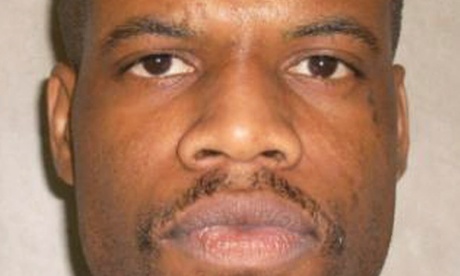
Courtesy Of Vogue/Mariano Vivanco Mike Coppola/Entertainment/Getty Images
Rihanna loves her body and is not ashamed of showing it off or even posing nude on magazine covers. But what does her boyfriend Drake think about her barely-there outfits? HollywoodLife.com has the exclusive scoop.
Drake has already began to tame Rihanna, but when it comes to her sexy outfits or lack there of, he’s not trying to stop her, a source close to the rapper told HollywoodLife.com exclusively. He thinks she’s “flawless!” Who doesn’t?!
Rihanna’s Naked Pics — Drake’s Reaction’s Like Ours: ‘ She’s Flawless’
Some men would probably not be too happy if there woman was going around town, flaunting their body on mag covers and in photo shoots. But like we said, Drake is not one of those men! The 27-year-rapper thinks Rihanna is “flawless” and has no intention of asking his boo of covering up her half-naked body when she’s out in public or approached to do photo shoots.
“Drake would never complain or criticize Rihanna‘s sex appeal because in his mind, she’s FLAWLESS!” a source connected to the rapper exclusively revealed to HollywoodLife.com. “Nobody does it better than her. She’s grown and sexy, with a banging body and if she wants to wear her birthday suit all day long, he’s down with that.”
Rihanna Bares Full Nipples On ‘LUI’ Cover
Ri Ri headed out to a Brooklyn Nets game on April 25 in a tight white tank, and didn’t even bother wearing a bra — showing her nipples! She also landed the cover of Vogue Brazil, and showed them again in the inside spread! However, the most risqué one ever could be her most recent — the cover of French adult entertainment mag LUI, where she’s completely topless on the cover and not covered up at all. In the inside of the mag — she has no bottoms on!
But Drake doesn’t sweat it.
“He’s been infatuated with her from day one and now, thankfully, he’s the luckiest man on the planet,” the source added.
What do you think, HollywoodLifers? If you were Drake, would you care about Ri Ri’s super sexy shoot? Should Rihanna stop? Let us know!
– Eric Ray
More Rihanna And Drake News:
- Jay Z Responds To Drake’s Latest Diss With Harsh New Rap — Listen
- Rihanna Goes Braless In Sheer Tank At Brooklyn Nets Game — Pic
- Rihanna & Drake: How They Make Their Long-Distance Love Work
 Rihanna Shows Some Skin In Crop Top & Matching Mini Skirt Apr29 The fashion-forward songstress flaunted her killer body in a… Read Article►→
Rihanna Shows Some Skin In Crop Top & Matching Mini Skirt Apr29 The fashion-forward songstress flaunted her killer body in a… Read Article►→  Rihanna's Stunning Natural Shimmer & Fresh Face In NYC Apr29 Natural makeup seems to be making its round amongst celebrity… Read Article►→ Sponsored Content by Taboola
Rihanna's Stunning Natural Shimmer & Fresh Face In NYC Apr29 Natural makeup seems to be making its round amongst celebrity… Read Article►→ Sponsored Content by Taboola  Jay Z Responds To Drake's Latest Diss With Harsh New Rap -- Listen Apr29 It's not over! Drake once again poked fun at his elder hip-hop… Read Article►→
Jay Z Responds To Drake's Latest Diss With Harsh New Rap -- Listen Apr29 It's not over! Drake once again poked fun at his elder hip-hop… Read Article►→  Katy Perry Disses 'Soft' Rapper Drake - Will Rihanna Be Mad? Apr28 Has Katy Perry already ruined her rekindled friendship with… Read Article►→
Katy Perry Disses 'Soft' Rapper Drake - Will Rihanna Be Mad? Apr28 Has Katy Perry already ruined her rekindled friendship with… Read Article►→  Shakira: I Have 'A Lot In Common' With 'Down To Earth' Rihanna Apr28 The songstress posed for a seriously sexy shoot for 'Ocean… Read Article►→
Shakira: I Have 'A Lot In Common' With 'Down To Earth' Rihanna Apr28 The songstress posed for a seriously sexy shoot for 'Ocean… Read Article►→  Rihanna & Katy Perry Party In NYC: Back To Being BFFs? Apr28 Rihanna and Katy Perry were once pop music's favorite BFFs but… Read Article►→
Rihanna & Katy Perry Party In NYC: Back To Being BFFs? Apr28 Rihanna and Katy Perry were once pop music's favorite BFFs but… Read Article►→  Rihanna Goes Braless In Sheer Tank At Brooklyn Nets Game -- Pic Apr26 Rihanna went braless in a sheer tank at a Brooklyn Nets game at… Read Article►→
Rihanna Goes Braless In Sheer Tank At Brooklyn Nets Game -- Pic Apr26 Rihanna went braless in a sheer tank at a Brooklyn Nets game at… Read Article►→  Rihanna & Drake: How They Make Their Long-Distance Love Work Apr25 Being apart isn't easy for Rihanna and Drake, and that's why… Read Article►→
Rihanna & Drake: How They Make Their Long-Distance Love Work Apr25 Being apart isn't easy for Rihanna and Drake, and that's why… Read Article►→  Rihanna's Red Lips & Wet Hair On The Cover Of 'Vogue' Brazil Apr25 The always sexy Rihanna landed not one, but two covers of… Read Article►→
Rihanna's Red Lips & Wet Hair On The Cover Of 'Vogue' Brazil Apr25 The always sexy Rihanna landed not one, but two covers of… Read Article►→  Rihanna Adores Pharrell's Family With Special Instagram Message Apr25 Rihanna has a special message for Pharrell: 'I love your little… Read Article►→
Rihanna Adores Pharrell's Family With Special Instagram Message Apr25 Rihanna has a special message for Pharrell: 'I love your little… Read Article►→  Rihanna Topless In 'Vogue' Brazil -- See Her Sexy Shoot Apr25 Now that's one way to ring in an anniversary! For the magazine's… Read Article►→
Rihanna Topless In 'Vogue' Brazil -- See Her Sexy Shoot Apr25 Now that's one way to ring in an anniversary! For the magazine's… Read Article►→  Rihanna Disses Chris Brown: He 'Abuses His Fame' Apr25 Rihanna is hoping that jail will make Chris Brown a more humble… Read Article►→
Rihanna Disses Chris Brown: He 'Abuses His Fame' Apr25 Rihanna is hoping that jail will make Chris Brown a more humble… Read Article►→  Rihanna: How She Really Feels About 'Dumping' Drake Apr25 Drake and Rihanna may not be in the same city every night, but… Read Article►→
Rihanna: How She Really Feels About 'Dumping' Drake Apr25 Drake and Rihanna may not be in the same city every night, but… Read Article►→  Rihanna: Did She Just Dump Drake For Cheating? Apr24 Could Rihanna and Drake's budding romance already be dunzo? Well… Read Article►→
Rihanna: Did She Just Dump Drake For Cheating? Apr24 Could Rihanna and Drake's budding romance already be dunzo? Well… Read Article►→  Papoose: Rapper Disses Drake's Album For Being Lame & Too 'Sweet' Apr23 When Drake released his album 'Nothing Was The Same' in Sept… Read Article►→
Papoose: Rapper Disses Drake's Album For Being Lame & Too 'Sweet' Apr23 When Drake released his album 'Nothing Was The Same' in Sept… Read Article►→  Rihanna Wants Drake To Do Couples Workouts To Spice Up Love Life Apr23 Rihanna works very hard at keeping herself looking hot and… Read Article►→
Rihanna Wants Drake To Do Couples Workouts To Spice Up Love Life Apr23 Rihanna works very hard at keeping herself looking hot and… Read Article►→  Lily Allen Disses Rihanna In Wild 'Sheezus' Video - Watch Apr23 Leave it to Lily to strike every major pop princesses nerves in… Read Article►→
Lily Allen Disses Rihanna In Wild 'Sheezus' Video - Watch Apr23 Leave it to Lily to strike every major pop princesses nerves in… Read Article►→ 













